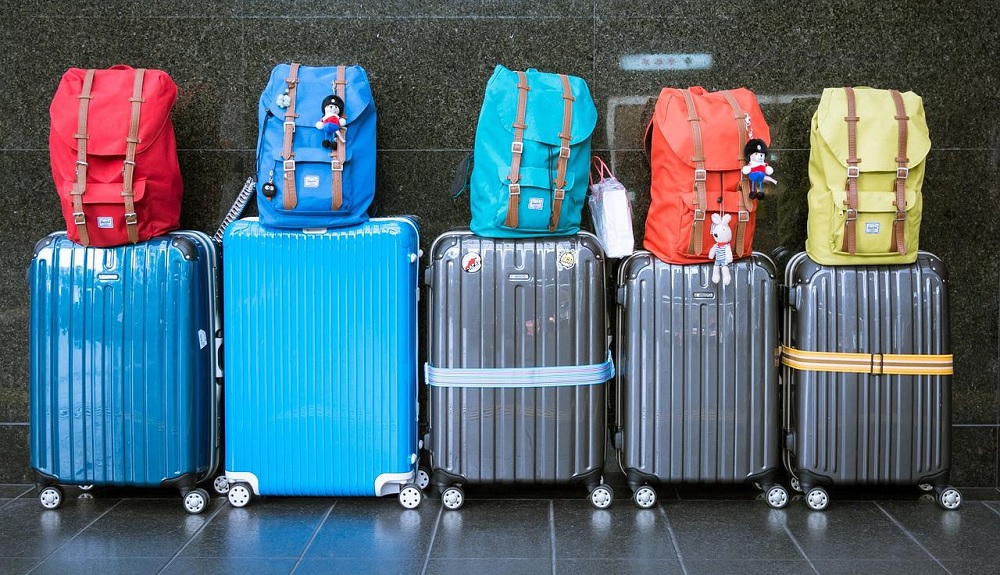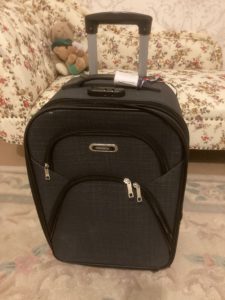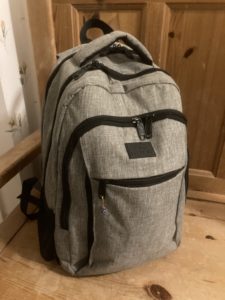
Hauling multiple heavy suitcases through an airport can be a drag. This is especially so when you’re asked to pay an excess baggage charge or told you can’t take your hand luggage in to the cabin because it’s over the permitted size.
Carry On luggage Only
Personally, I never have this problem because I travel lightly. In fact, I usually travel with hand luggage only. I figure that if I am going somewhere special for my vacation, I’ll want to purchase souvenir T-shirts and hoodies, so why bring my own?
Even if you plan to attend a special event, like take in a cabaret in Paris or enjoy an evening dining cruise in Hawaii, you can still either hire the necessary clothes there or buy new ones to take home as a reminder of the event.

Suitcases too
Hand luggage only isn’t appropriate for everyone. If you are traveling for business, there may be work-related items you must pack. And if you plan to engage in a specific activity, such as wildlife photography or fishing, there may be specialized equipment you must take.
But whether you are traveling with hand luggage only or taking suitcases, there is still a simple method to ensure you minimize what you carry.
You must pack nothing that you don’t require while at the same time packing everything that you really need.
Start with a list
Before I put the first item of clothing inside a suitcase, I pause to think. The best way to ensure you pack everything you need is to write out a list.
It’s no good to make a list inside your head and think you’ll remember everything. You actually need to type it out onto a document or—better in my opinion—grab a pen and paper and write it out by hand.
With a list, you can review it before you begin packing so that you can easily remove items you don’t really need. But a list also ensures you don’t leave anything vital behind.
Every traveler has their own specific needs, so every list will be different. But I think my way of making a list is logical and will probably work for most travelers.
I begin creating my list by writing down five headings. These help me to focus my thoughts so I don’t miss anything off my list.
My five headings are:
- Vital items
- Equipment
- Clothes
- Toiletries
- Food & drinks

Vital items
This is the most important category. If you were in a hotel and you were told there was a fire, these are the items you would grab first—but hopefully after the kids—because they are essential for your survival at your destination.
The vital items are different for every traveler. If you have a medical condition and require medication or a piece of medical equipment to get by, that would be included in this list. A traveler with a serious allergy would include their EpiPen in this category.
Other obvious essential items are your passport, driver’s license, travel documents including insurance, and bank cards.
And with recent developments, you shouldn’t travel anywhere without face masks and hand sanitizer. For superior protection, pack disposable N95 masks, rated FFP2 or FFP3 in the European Union. For a full list of my recommendations on safety post-covid, check my article How to Travel Safely & Effectively Post Covid-19 Pandemic
Equipment
The equipment you take will depend on what you plan to do during your travels. If you plan to spend time in remote locations, say hiking in the wilderness, consider items such as a first aid kit and a handheld GPS unit.
On camping trips, you may need such equipment as a tent, a portable stove, and a sleeping bag. Shop around for the most lightweight options to reduce the amount of weight you are forced to carry.
If possible, hire equipment at your destination rather than taking it with you. If you want to go surfing in Costa Rica, it makes much more sense to hire a surfboard at your destination than to carry one onto an airplane. However, if you are dedicated to a specific activity then you may feel that you must take your own specialized equipment, such as the best binoculars for bird-watching.
Clothes
As I said earlier, I pack as few clothes as possible and then buy what I need at the destination. One trick that I use is to take my oldest socks, underwear, and T-shirts when I travel. During my vacation, I throw away the old clothes. The room I’ve created in my luggage can then be used for souvenirs and T-shirts from the attractions I visit.
Overdressing for the airport enables you to carry less clothing in your bags. Personally, I find the air-conditioning on airplanes too cold, so I’m happier wearing layers while flying. Your clothing list should include both the clothes you’re wearing and those you plan to pack inside your bags.
On some vacations, you may need specialist clothing. For example, you may need a ski coat for skiing. If you can’t hire such clothing at the resort, you must include it in your list.

Toiletries
Unless you’re headed out into the wilderness on a camping trip, you’ll most likely be able to purchase any toiletries you need when you get there.
However, some people have special requirements due to allergies or other medical conditions. Alternatively, you may have strong brand preferences or requirements due to your lifestyle. For example, vegans can only use certain soap products. In these situations, add the necessary toiletries to your list.
Food & drinks
Obviously, you can buy food and drink at your destination. The exception may be if you’re going on a cycling trip or hiking adventure when you should ensure you carry enough water for hydration and select lightweight food that can be easily cooked.
For long backpacking adventures, dehydrated food is best because it is lightweight and simple to cook. You should also invest in a portable water purifier and research streams and lakes where you can fill up a reusable water bottle along the route.
After your list is complete
The next step is to assemble everything you need for your vacation and to lay it out on a flat surface. This enables you to visualize how you are going to pack everything. It also gives you a chance to rethink whether or not you really need each item.
Once you’ve seen what you need to take, you can select an appropriate bag. It must be large enough to hold everything you need to take but no larger.
An oversized bag is needlessly heavy and if things rattle around inside, they can be damaged. Before packing, ensure you check every compartment and remove anything left behind from a previous adventure.
What bags should you choose?
Personally, I use a small backpack that includes pouches for electronic devices in its design. It has a large slot for my laptop and a thin slot next to that for my iPad. It also includes multiple internal and side pockets that help me to organize my things in an optimal way.
However, my wife prefers her under-seat bag. It’s one of those with wheels and a telescoping handle that I can slot my small backpack onto so we can easily wheel them both through the airport and other travel hubs.
If you are going down the hand-luggage-only route, check the airline’s rules with care. Recently, several airlines have reduced the size and weight of bags they allow inside cabins. These specifications are easily checked on any airline’s website.

Optimal Packing
Because you have everything laid out, you can see what needs to be packed first. As you pack each item, cross it off your list. This both ensures that you don’t miss anything and prevents you from packing two of the same item.
Heavy items first
Typically, it’s best to pack the heavier items first. If you’re using a backpack, they need to be at the bottom, so they don’t crush lighter and fragile items. Also, try to arrange these heavy items in a central position for better balance.
Frequent-use items
Anything you need to use often should be somewhere easily accessible, such as a side pocket. For example, water for hydration during your journey can go in a side pocket.
Some frequent-use items can be hung on straps around your body. For example, your camera can be on a neck strap if you’re likely to use it during your journey.
Emergency use items
If there are items you might need urgently, such as an EpiPen, then these should not only be accessible, but you should also know exactly where they are so you’re not searching for them when you need them.
It’s a good idea to put such items in a side pocket and then to somehow label that pocket. For example, you can tie a travel label to the zipper tag or simply mark it with a chalk cross.
The benefits of traveling lightly
If you fly often, you don’t need me to tell you about the benefits of traveling lightly. When I arrive at the airport, I don’t need to check in my suitcases because I’m carrying hand luggage only. Then, when I arrive, I head straight for passport control while my fellow passengers are left hovering around the carousel awaiting their suitcases.
Other benefits include the ease of moving lighter bags, the reduced risk of back problems, and the fact that you’re helping to reduce your carbon footprint just a little bit by carrying less weight onto an airplane.

Are you ready for your adventure?
Once you’ve crossed everything off your list, you’re ready to travel and confident you’ve packed everything you need and nothing you don’t. Enjoy your vacation!



